Help out the prettiest pollinators on their long journey south by creating a butterfly pathway garden. These gardens are wonderful homes, pit stops, and stomping grounds for butterflies to rest and fuel up. Grow some of these butterfly garden plants and make your own pathway designed just for those with tiny painted wings!
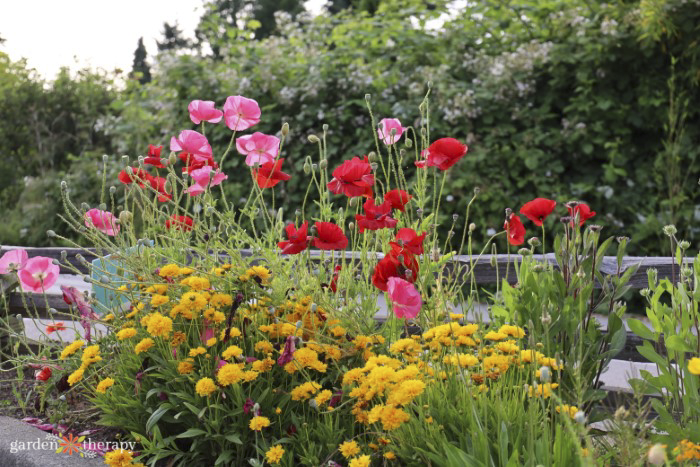
My kiddo has the biggest heart. When it comes to wildlife in the garden, he puts all pollinators up on a pedestal. I like to think that all those teaching moments in the garden really made an impact on the kiddo’s empathy, but really, I think it’s all him.
Since butterflies are a favourite for kiddo and me, I do everything I can to ensure my garden is a welcome place for them. Besides pollination, the butterflies bring an incredible sense of peace and joy to the garden. Just seeing them flit from flower to flower fills my spirit.
A butterfly garden doesn’t need to be a specific design or include complicated plantings. Start by adding a few flowers that attract butterflies to your front garden, and you’re already off to a great start!
This post will cover…
- What is a Butterfly Pathway Garden?
- Butterfly Garden Host Plants
- More Butterfly Garden Plants
- Butterfly Garden Ideas
- Frequently Asked Questions About Building a Butterfly Pathway Garden
- More Posts on Pollinators
This project comes from my book The Regenerative Garden. Inside, I cover over 80 projects you can apply to your own garden to help create a sustainable, self-reliant space. Like butterfly pathway gardens, I also include ways you can give back and get involved with your community…be it humans or wildlife!
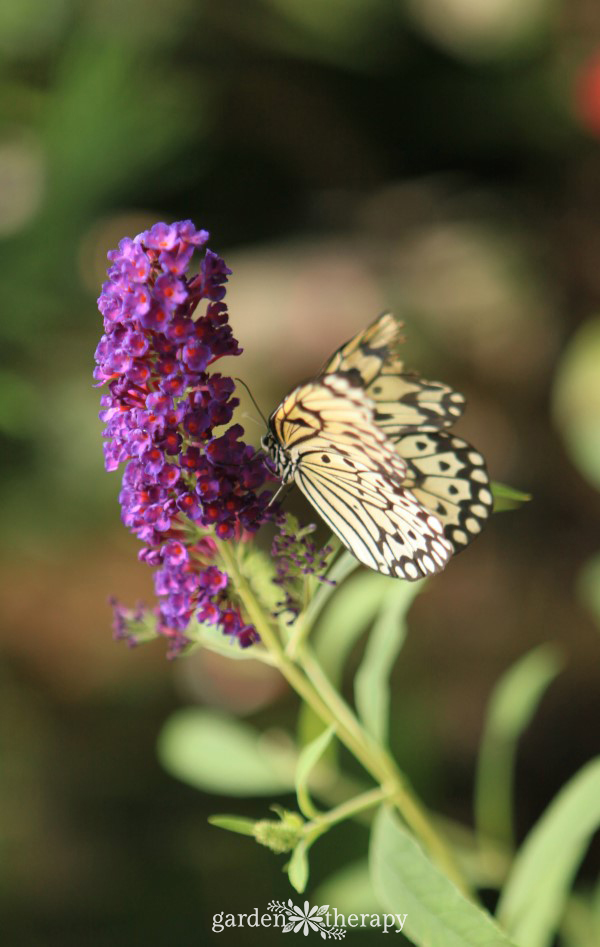
What is a Butterfly Pathway Garden?
Some wild creatures, such as butterflies, must migrate to survive throughout the year. Unfortunately, as we’ve urbanized areas, we’ve removed the native plants that these wonderful pollinators need to survive the butterfly migration.
The good news is that we can create pathways along which butterflies and other pollinators make stops to help regain their energy, and we can host them until they are ready to continue the journey. Think of them as butterfly gas stations!

Butterfly Garden Host Plants
Many butterflies require specific plants at some point in their life cycle, so research the native butterflies that migrate to your area and learn what plants to include.
For instance, monarch butterflies need milkweed, so if monarchs are the butterflies that you’re hoping to support, then your butterfly migration garden will need to include milkweed plants.
Here are some host plants for some common North American butterflies:
- Monarch – milkweed
- Canadian tiger swallowtail – black cherry, birch, cottonwood, and apples
- Eastern tiger swallowtail – black cherry, ash, cottonwood, common lilac, and willow
- Clouded sulphur – white clover, alfalfa, and the pea family
- Orange sulphur butterfly – alfalfa and the pea family
- Cabbage white butterfly – plants in the mustard family
- Red admiral butterfly – stinging nettle, false nettle and the Cannabaceae and Compositae family
- Painted lady butterfly – hollyhock, mallow, borage, and thistle
- Spring azure butterfly – dogwood, viburnum, and cherry
Find more local butterflies and their host plants using the National Wildlife Federation’s Native Plant Finder.
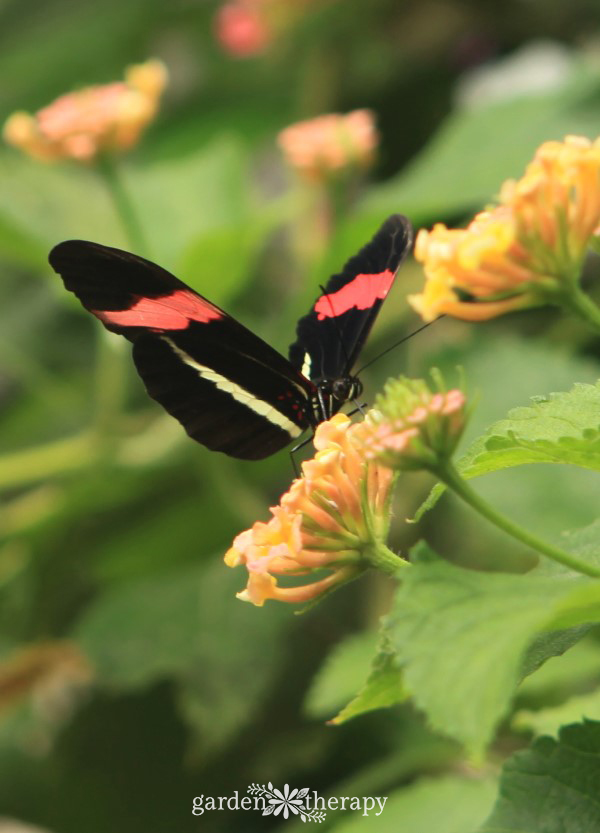
More Butterfly Garden Plants
Besides the host plants, you’ll want to fill your garden with plants that butterflies love to get nectar and fuel up on. Here are some butterfly garden plants you may want to include.
- Allium Allium
- Aster Aster
- Bee balm Monarda
- Black-eyed Susan Rudbeckia hirta
- Blanket flower Gaillardia
- Butterfly bush Buddleja
- Catmint Nepeta racemosa
- California lilac Ceanothus
- Cornflower Centaurea
- Daylily Hemerocallis
- Dill Anethum graveolens
- False Indigo Baptisia
- Goldenrod Solidago
- Hollyhock Alcea
- Lantana Lantana
- Lavender Lavandula
- Lilac Syringa vulgaris
- Lupine Lupinus x hybrida
- Nasturtium Tropaeolum
- Phlox Phlox x arendsii
- Poppy Papaver
- Purple coneflower Echinacea
- Rock Cress Arabis
- Sage Salvia officinalis
- Sea Holly Eryngium
- Shasta daisy Leucanthemum x superbum
- Snapdragon Antirrhinum
- Sweet alyssum Lobularia maritima
- Yarrow Achillea millefolium
- Zinnia Zinnia
Butterfly Garden Ideas
Creating a station in your yard that’s packed with plants that allow butterflies both to feed and reproduce is a great way to contribute to natural butterfly migration patterns. This can also be a fun community-building project to encourage neighbours to join by planting their own butterfly pathway gardens.
One of the key components of planting a butterfly pathway garden is to add some signage that allows folks to know the reason why it’s there. This educational component helps others in the community to protect it and hopefully join the project themselves.
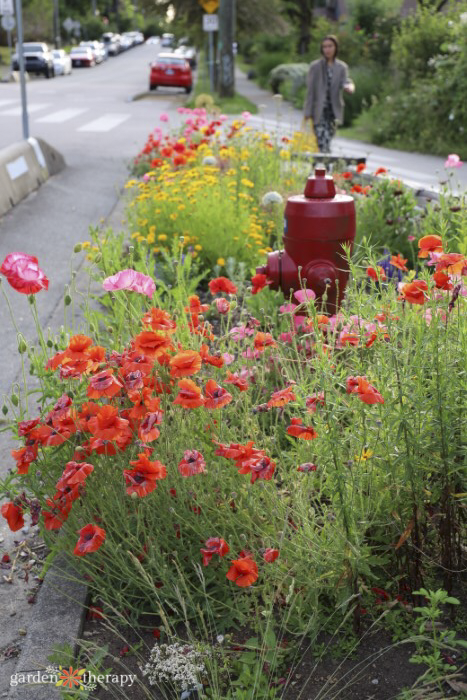
If you want to take it one step further, work with organizations that create butterfly migration pathways to get your whole neighbourhood involved in planting paths for migrating butterflies. If your community becomes passionate about it, you can reach out to other communities to join in, host workshops on getting started, and join projects that map out migration pathways.
There are many more components to building a butterfly-friendly garden than the plants. You can learn more about all the facets of a butterfly garden here and a pretty DIY butterfly feeder here.
Frequently Asked Questions About Building a Butterfly Pathway Garden
Butterflies are cold-blooded creatures, meaning they rely on outside sources to keep their bodies warm. They can’t handle cold weather and need to head down south to follow the sun! In addition, they need to follow their food source. If there are no more flowers, it’s time to move on.
While everyone knows that the monarch migrates, so do many other types of butterflies, including the painted lady, red admiral, common buckeye, and many more. The monarch migration usually begins in October but can happen earlier if it’s cold.
Butterflies can even migrate in warm climates. This ensures they form new colonies and spread out so that all their food sources aren’t depleted.
Butterflies are an indication of a healthy landscape. Since their population can quickly decrease when something is wrong in the area, lots of butterflies are a good thing. Of course, they’re also one of the main pollinators who help our garden bloom.
Since pesticides aren’t good for butterflies, those who want them in the garden shouldn’t use them. And fewer pesticides, the better, I say!
Butterflies are also very much a part of the food chain. More butterflies can also mean other beneficial insects and wildlife will move in, such as birds.
Lastly, they’re just a joy to have in the garden. They are one of the most wonderful partners to have around while gardening.
Butterflies are ectotherms, meaning they rely on external sources to stay warm. They love being in the sun as much as possible! Having a rock in the full sun gives the butterflies a place to rest and warm up their bodies. You’ll see them with their wings wide open, soaking up the sun.
Besides a rock for basking, they should also have a shallow pan to drink out of, like this bee bath. All pollinators will love it! For the butterflies, be sure to add some sand or gravel at the bottom, so it’s not too deep.
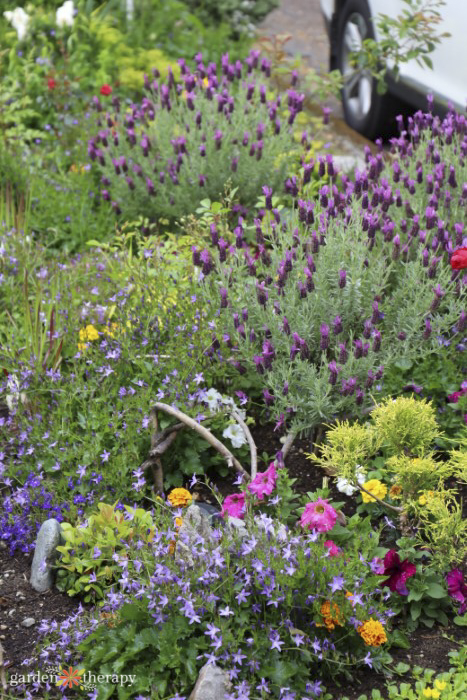
From myself, my kiddo, and the ladies with painted wings, thank you from the bottom of our hearts for growing a butterfly pathway garden. Let me know how it goes in the comments below!

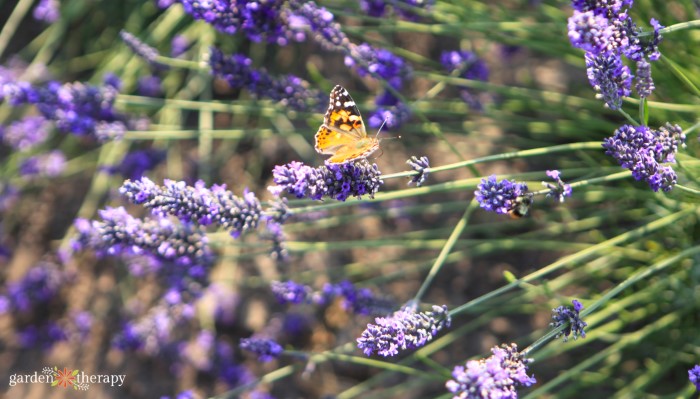
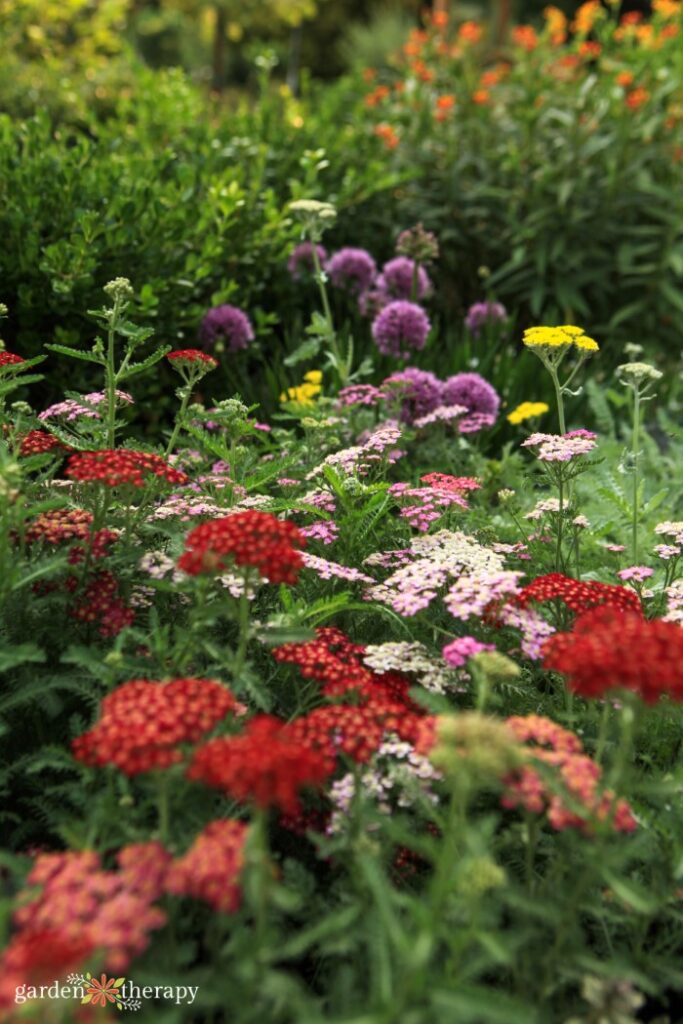
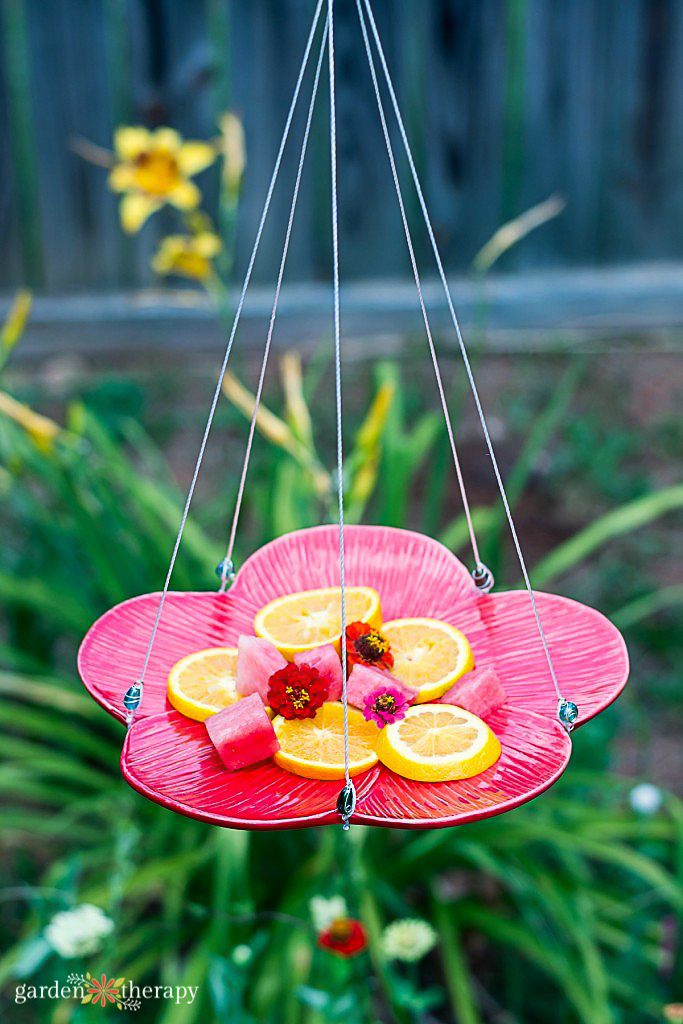
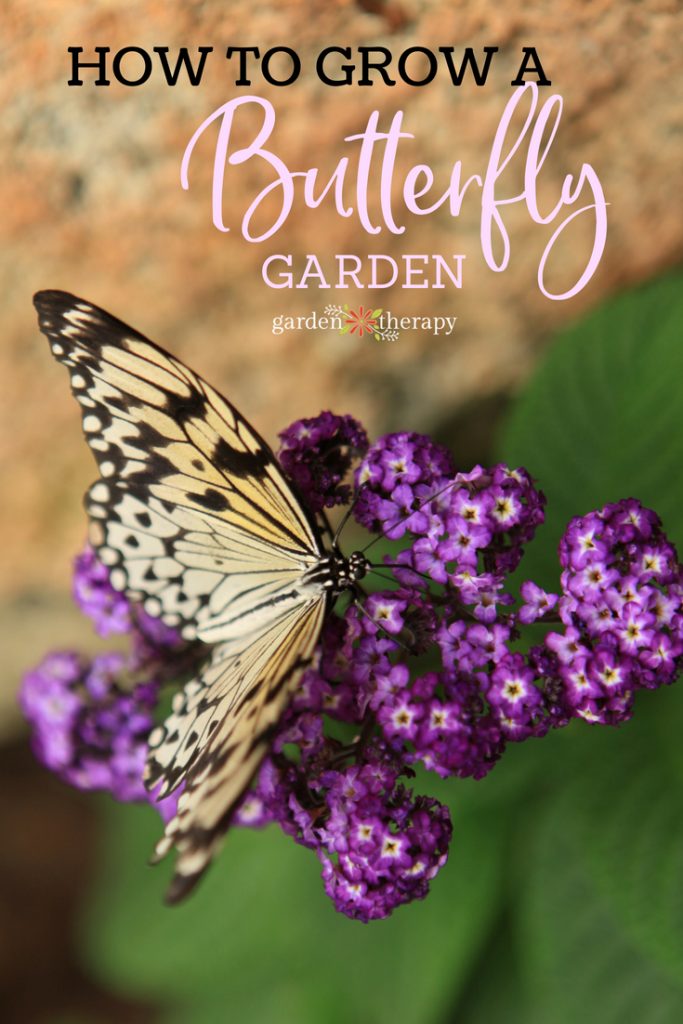



I live in Mexico City and butterflies love the bougainvillea plants. Like for bees, a shallow dish with colorful marbles works well as a watering place
lovely!